
It’s a question we hear all the time… What is a Digital Product? So we created this guide to help individuals, teams and companies answer that question.
Before we talk about Digital Product Management and the role of a Digital Product Manager (DPM), let us first define a digital product. Digital products exist on a continuum of pure digital to hybrid digital/non-digital. At its core, a digital product is delivered electronically.
What is a Digital Product?
In the last five years or so, there’s been a new specialization in the field of Product Management leading to the exciting new role of a Digital Product Manager. In this article, we discuss the special nature of digital products, what it means to be a Digital Product Manager, and the unique challenges and skills needed for the role.
Attributes of a Digital Product
Typically, these products have the following attributes:
- They are easy to fulfill or acquire as long as the customer has an internet connection. There is no physical item to move from point A to point B.
- Holding a digital product does not take up space. There is no inventory of a digital product. You will never hear Facebook say, “Well, we’ve run out of Facebook!”
- With the broad reach of cellular and Wi-Fi communications, digital products can be updated quickly and frequently.
- Digital products allow for a sustained and more interactive relationship with the user. Digital Product Managers have the unique ability to understand each experience a customer has with the product providing a detailed picture of when and how it is being used – while the customer is using it.
- The combination of being able to update the product quickly and the close relationship between the customer and Digital Product Manager allows the DPM to learn quickly about evolving customer needs, then provide new forms of value almost continuously.
Adding Digital Value to a Non-Digital Product
Just because your product is not a digital product itself, that doesn’t mean you can’t use digital technologies to add more value to it. Many consumer-packaged goods, physical products, and hardware products are doing this today. Examples include software updates for automobiles, “how to” videos for tools, improved order and delivery systems for consumables, and mobile applications for products or services as diverse as banking, washing machines, and even hot tubs! While these examples are not digital themselves, they offer more value to their users by offering a digital companion to the core product.
To “go digital,” it’s up to Product Managers to combine a deep understanding of their customers’ needs with creative thinking to apply digital technologies to their products to add more overall value that will excite customers and increase their loyalty.
Types of Products Which Rely on Digital Product Managers
Digital Product Managers are important for the types of products where the speed of value delivery to customers matters and include the following:
- SaaS: Software as a Service products rely on delivering value to customers over time. If a product stops delivering value, customers are likely to discontinue using the product and move elsewhere. Digital Product Management techniques are essential in a SaaS environment where customers have high expectations and rapid changes are easy to implement and deploy.
- Mobile Applications: for many mobile apps, particularly popular ones, customers again have high expectations that they will receive additional benefits, capabilities, or features over time. Many apps are updated on at least a monthly basis. Some games provide multiple updates in a single week! Operating at this release cadence requires information and decision tools that don’t bog you down.
- Software-augmented hardware solutions: The Internet of Things (IoT), the app that supports a car or heating system, are both examples where the value your product creates could be the difference between selling and not selling the underlying hardware. Providing the right solution means a clear focus on what customers value and what they are willing to pay for.
- Internal IT solutions: IT budgets are not infinite but internal customer expectations have now been set higher by what your users are accustomed to on their smart phones and tablets. The transition from project-based to product-based development means that the Digital Product Manager within the IT (or business) organization has to make the right decisions through a close understanding of the customer (your internal folks are still customers!) needs. Completing a project is no longer a success metric. Unless your internal customers are adopting your product and using it at scale, your solution did not succeed.
For these kinds of products, Digital Product Management techniques are ideal for making better decisions more quickly.
The Digital Product Manager Career
Digital product managers are in high demand, and are typically found in three different company settings:
- Companies that are “Digital Natives:” these are companies like Facebook, Salesforce, and Uber that began offering a digital product from the very beginning. At these companies, every Product Manager is a Digital Product Manager.
- Companies going through a “Digital Transformation:” these are companies that offer some sort of traditional, but are looking to either add a digital component (e.g. a mobile application) to the existing product, or are transitioning an existing product line (e.g. a paper medical invoicing company) to a digital offering. Here there will likely be a mix of traditional Product Managers and Digital Product Managers working together, perhaps with some existing Product Managers adding digital responsibilities to their role.
- IT departments within a company: many IT departments are making a transition from being project-based (build a tool by request for a department) to more of a product-management mentality (build a system that will provide value across departments, and can be reused for various needs). Oftentimes professionals in existing business analyst or project management roles are asked to transition to a Digital Product Manager role, or the department will hire Digital Product Managers as part the transition or expansion.
Compensation for Digital Product Managers is typically similar to that of Product Managers in a geographic area and with similar product lines.
Digital Product Manager Roles and Responsibilities
Define what a digital product manager does, and touch on the differences between a digital product manager and a regular product manager.
Digital Product Managers still have the same fundamental role and responsibilities as Product Managers of traditional products. At a high level these are:
- Understanding customer needs
- Defining the whole product
- Defining product strategy
- Defining go-to-market strategy
- Gathering requirements
- Guiding engineering
- Guiding sales and marketing
- Being a central point of communication for the product
- Owning the roadmap and communicating changes
However, with digital products, Digital Product Managers have access to a range of information from the customer’s interaction with the product that traditional Product Managers would love to have. The key is making sure that your digital product is set up correctly to take advantage of this amazing information flow. Ideally, all Product Managers should develop and apply the full range of Product Management skills – and know when it’s best to dive into a particular area to unearth the next opportunity for growth.
Because digital products have the ability to change more rapidly, Digital Product Managers are constantly in a state of learning new information and then turning those insights into product improvements for customers. To create products that delight customers, Digital Product Managers should focus on the following six tasks:
- Create and validate a product hypothesis
- Establish Product-Market fit
- Set measurable goals for their product and their business
- Make data-informed decisions: what in the product or customer experience should change and how? Once the change is made, what is the expected outcome?
- Partner with UX, Engineering, and other cross-functional teams to make product ideas come to life
- Leverage digital capabilities to track and improve the key drivers in a digital business: customer acquisition, retention, monetization, and pricing
This focus on customer needs often requires Digital Product Managers to giving up some or all of the focus on sales, marketing, and go-to-market activities. The Digital Product Manager’s goal is to optimize the whole product offering through this deep investigation of the end-to-end customer experience.
In the Digital Product Manager’s world, the tight integration between discovering and defining requirements and guiding engineering are the two parts of Dual-Track Agile development. In the figure below on the left, Digital Product Managers learn from in-product data analytics. They develop a hypothesis as to the next best functionality to develop and then guide engineering as they develop the next most important item that positively improves the customer’s experience.
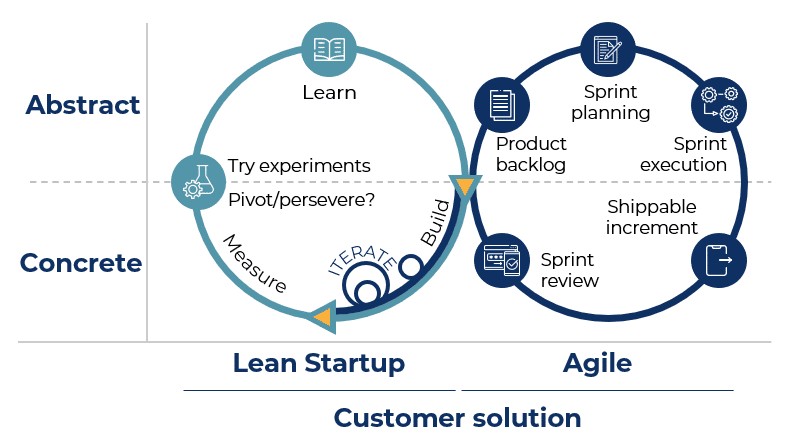
Digital Products Require Organizational Change
Successful Digital Products rely on a lot of product data, contributions from more technical disciplines, and closer integration with other departments. Successful companies have adapted their organizations to remove roadblocks to success.
Here are a few of the organizational advances that you may consider worthwhile:
Hire a Growth Product Manager: This person is focused on achieving improvement in one or more business metrics. They try different strategies and in-product tactics to grow the business. They are relentless at product experiments in pursuit of their goal.
Hire a Data Scientist: Given the volume of product data you may need to gather and analyze, having an expert on the team that knows how to instrument the product, gather the data effectively, and analyze it to find insights can be a tremendous asset. Alternatively, you may be able to engage a third party to provide you with these services.
Hire a Product Operations Manager: As your products scale, the quantity and quality of different actions and tracking that takes place grows with it. Your Product Operations Manager orchestrates the entire sequence of events. Check out the ProdOps diagram below for the typical functions of this role.
Create DevOps or ProdOps teams: for larger organizations, removing barriers to accomplishing tasks quickly means joining two or three different teams into one. Development can no longer throw code over the wall to the folks that implement it in Operations. They are now one organization. Taken to the extreme at Amazon, for example, they have ‘NoOps.’ When you write code as a developer, you are responsible for releasing it. No more playing tag by blaming another department when something doesn’t work.
In ProdOps organizations, any function that is necessary to coordinate the management and release of products, within the PM team and across multiple teams, is under one umbrella.
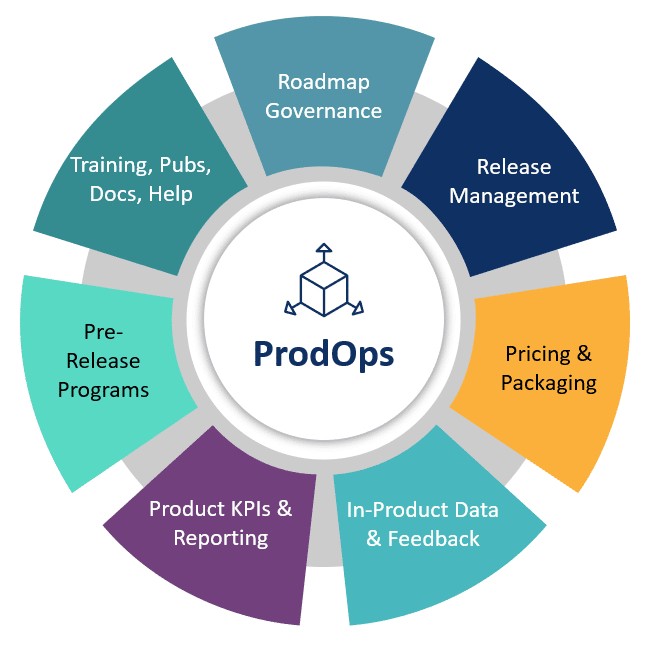
Expand your Product Team: Given these new roles, the definition of a product team needs to be expanded to include the right players in addition to the usual group of developers, user experience leaders, and the Product Manager. In particular, if product teams are organized as matrixed teams with contributors from different departments, be sure to have clear agreements on the level of commitment each team member has to your product team, to ensure you have the resources needed to be successful.
Hopefully, these recommendations can help you and your organization avoid some of the pitfalls often encountered when making the digital transformation to deliver value to customers through these new technologies. For organizations who change and want to start playing by digital playbooks, the results are significantly better than continuing to play by the old rules.
Digital Product Manager Skills & Strategies
Focus on outcomes instead of outputs: Successful Digital Product Managers start by clearly identifying the business outcome that they are trying to achieve. This could be the “objective” in an OKR, for example. For a desired business outcome, such as “Reduce churn by 2% by year end,” the next level is to create a few product outcomes that could potentially achieve the business outcome. Then, finally work on which output from the development organization could create the product feature that delivers the product outcome which ultimately achieves the desired business outcome.
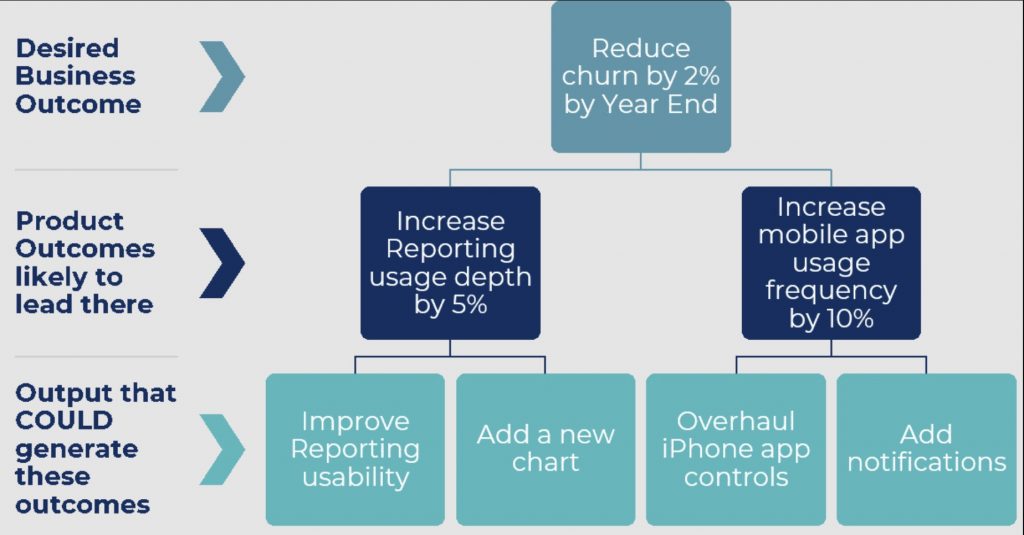
Personas: Personas are archetypes that describe a group of people who interact with your product. You want to create personas for the different stakeholders involved in considering, deciding, and using your product. This includes buyers, users, and technical decision makers. For each persona, define their role, goal, background, attitude, behavior (especially usage behavior), and any other insights. With a properly developed persona based on real research, you’ll gain a better understanding of what motivates your prospective customers, and what needs they have that you can help satisfy. User eXperience (UX) experts can be great partners in helping develop effective personas.
Design thinking: This important technique begins with deep, empathetic listening to your customers’ problems. You then move through different phases using the knowledge learned in previous phases to evolve a solution with the customer problem at the core. The different phases are empathize, define, ideate, prototype, and test. At each phase, take time to iterate until you are happy that you understand fully the implications of that phase. This is a very Zen concept that yields amazing results if followed carefully.
Jobs-to-be-Done (JTBD): This is a great technique which relies on looking at customers and understanding what job a customer is “hiring” a product to do. One of the Productside Trainers describes it this way: “When I travel, I don’t want a better way to plug in the iron in my hotel room. I want shirts that are unwrinkled.” Here’s another example:
“People don’t want quarter-inch drill bits. They want quarter-inch holes.” (And why do they need the holes??)
Leo McGinneva, Advertising Guru
Using this technique can lend new perspectives on what customers really want and opens up new ways of thinking about how to really satisfy their needs by getting their job done.
Customer Journey: Customers are increasingly looking for an entire user experience. The only way to achieve this result is to map every step out with different departments and then determine what next steps are as an entire organization. The technique for doing this is creating a customer journey. Check out our article on Customer Journey Mapping Tools and download our template to create your own customer journey.
Storyboards: If you thought that Hollywood had a lock on storyboards, think again! In moving from the problem space to the solution space, it’s helpful to create a series of cells that visually describes the series of events that your customer will experience throughout the usage of your product. It’s as simple as using a series of boxes with captions, or you can copy the image below onto a blank document and start drawing! Sketching out the customer journey this way will help you understand if you’ve captured all of the major steps in the experience, and identified all of their needs. It also provides you with a simple yet powerful way to explain the experience to others on your team. Again, rope in User eXperience people to help, as they love storyboards!
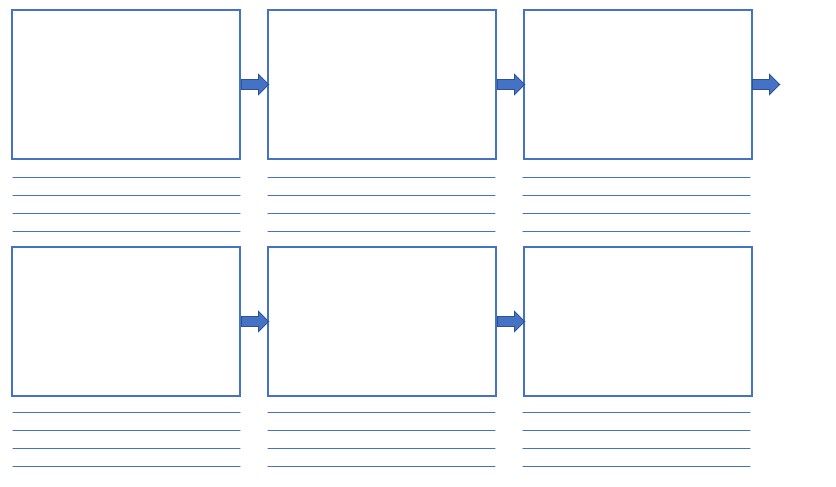
User Story Mapping: Yes, one last technique to get your team on board as you create a solution for your customer. User Story Mapping is a technique that your development team can use to decompose the work down to the detail level that makes sense to them. Make no mistake. What looks to be detail to you is very high level for them. Check out the sample (and simplified) User Story Map for “Donna Doglover” who has a sick pet. Notice that you start with the Persona and the “epic” level steps, then dissect each part of these epics into user stories, so that your developers can then create the tasks and details that they must work on as they start to build your amazing product!
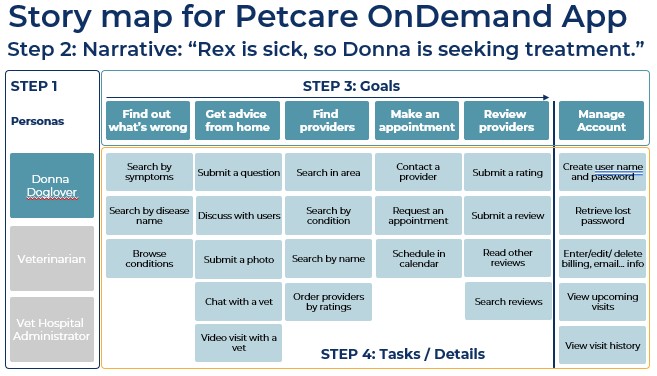
What Certifications Should a Digital Product Manager Have?
Proving that you have the entire gamut of skills needed by a Digital Product Manager is a challenge. Productside has partnered with AIPMM to offer independent verification that you know your stuff. Studying for and taking the Certified Digital Product Manager™ exam administered by AIPMM will demonstrate to your peers – and your management – that you are serious about your career in creating digital products that matter. Productside’s Digital Product Management Course will help prepare you to pass this exam and earn your certification.


